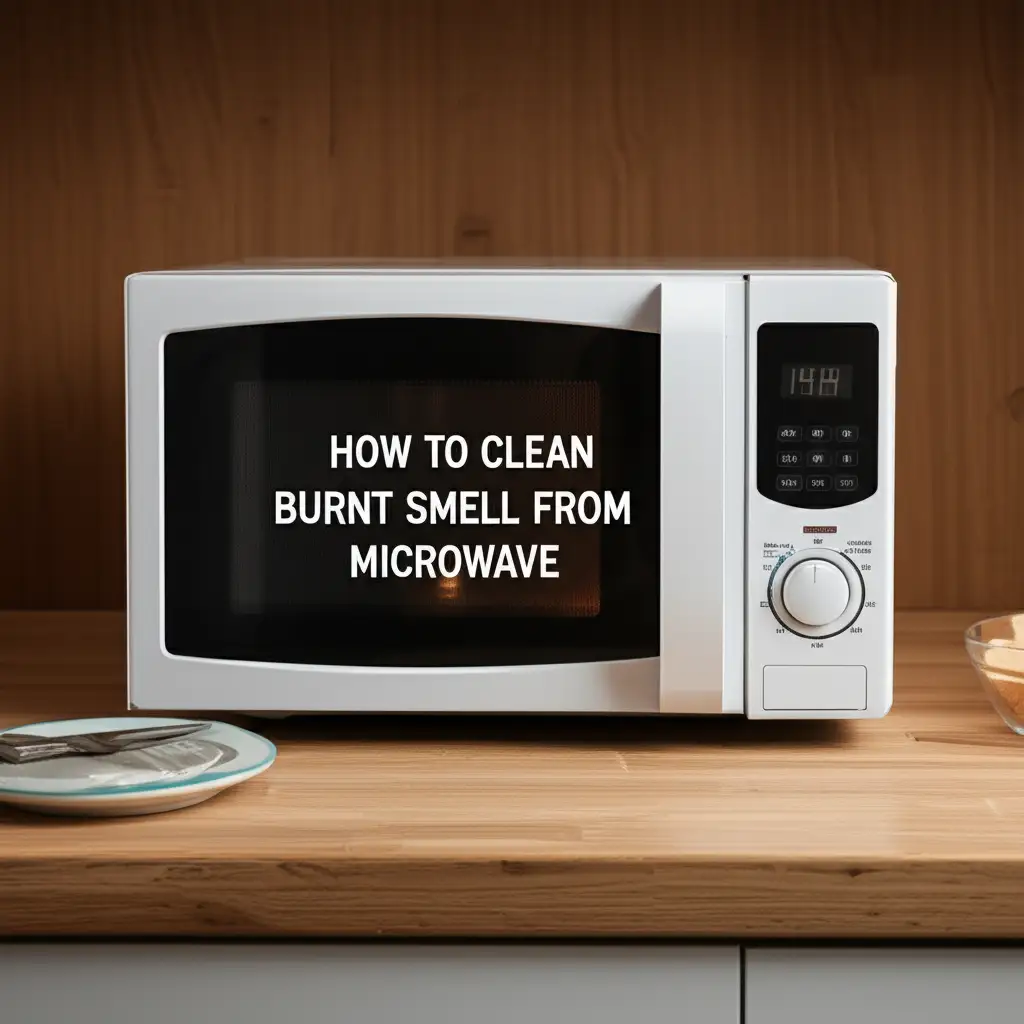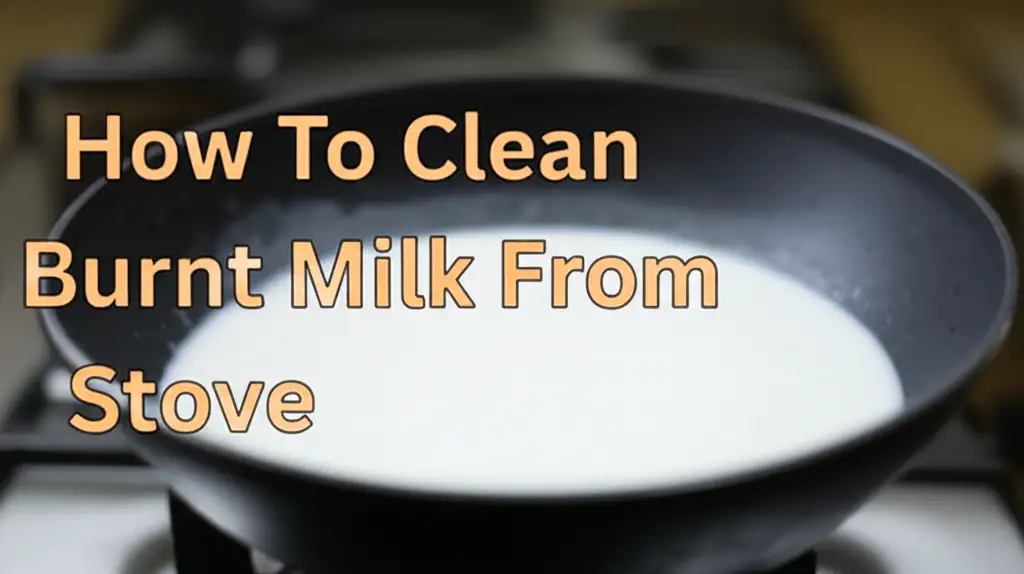· Home Cleaning · 13 min read
How To Clean Burnt Smell From Microwave

How To Clean Burnt Smell From Microwave Quickly
Have you ever opened your microwave to a horrible, acrid scent? A burnt smell in the microwave is quite common. Maybe you forgot popcorn, or a dish splattered. This powerful odor lingers. It makes your next meal smell bad too. I know how frustrating it feels when your kitchen fills with that nasty scent. Luckily, you can remove burnt smells. This article shows you how to effectively clean burnt smell from microwave using simple household items. We will explore various methods. You can get your microwave smelling fresh again. We will cover steam cleaning, natural deodorizers, and deep cleaning techniques.
Takeaway
- Act Fast: Clean spills and odors immediately to prevent deep lingering.
- Use Steam: Water with lemon or vinegar creates steam, loosening grime and odors.
- Deodorize Naturally: Baking soda, coffee grounds, and activated charcoal absorb bad smells.
- Deep Clean: Wipe down all surfaces thoroughly with a degreaser or mild soap.
- Prevent Future Smells: Cover food, clean spills right away, and use ventilation.
You can clean burnt smell from your microwave by first removing any burnt food particles. Next, steam clean the interior with water and lemon or vinegar. Finally, use natural odor absorbers like baking soda or activated charcoal. This process removes residue and neutralizes lingering odors.
Understanding Burnt Odors in Your Microwave
A burnt smell in your microwave comes from scorched food particles. These particles attach to the microwave’s interior surfaces. When you heat food, the microwave cooks food using electromagnetic waves. These waves cause water molecules in food to vibrate. If food burns, it creates smoke and soot. This residue sticks to the walls, ceiling, and floor of your microwave. The smell then permeates the entire appliance.
Different types of burnt food produce different odors. Burnt popcorn has a distinct, strong smell. Burnt sugar leaves a caramelized, bitter scent. Cleaning burnt sugar from a pan shares similar principles for dissolving sticky residues. Grease can also burn and leave a greasy, acrid smell. This is similar to cleaning burnt grease from frying pans. The longer the burnt food stays inside, the harder the smell is to remove. Air circulation inside a closed microwave is limited. This makes odors concentrated and persistent. Understanding the source helps in choosing the best cleaning method.
Initial Steps Before Cleaning
Before you start any deep cleaning, you must prepare your microwave. This first step ensures safety and makes the cleaning process easier. Always unplug your microwave from the wall outlet. This prevents accidental activation during cleaning. Safety is important when cleaning any appliance.
Next, open the microwave door wide. Let it air out for a few minutes. This helps some of the strong, immediate smell dissipate. You also want to remove all removable parts. Take out the glass turntable plate and the roller ring. These items often have burnt residue or absorbed odors. Wash them separately with warm, soapy water. Use a dish brush or sponge to scrub away any visible burnt bits. Rinse them thoroughly and set them aside to dry. Make sure to check under the turntable for any hidden crumbs. Even small particles can contribute to the lingering odor.
Steaming Methods for Odor Removal
Steaming is a highly effective first step to remove burnt smells. It loosens stuck-on food and helps release trapped odors. The steam penetrates the interior. This makes wiping down much easier later. This method also uses natural ingredients.
Lemon and Water Steam Method
Lemon works as a natural deodorizer and cuts through grease. I find this method particularly refreshing. You need a microwave-safe bowl. Fill the bowl with one cup of water. Add several slices of a fresh lemon to the water. You can also use a few tablespoons of lemon juice. Place the bowl inside your microwave. Heat it on high power for 5-10 minutes. The water will boil and create steam. This steam fills the microwave cavity. The steam also loosens any hardened food splatters. Do not open the door immediately after the timer stops. Let the bowl sit inside for another 5-10 minutes. This allows the steam to continue working.
Vinegar and Water Steam Method
Vinegar is another powerful natural cleaner and deodorizer. Its acidic properties break down odors. This method is similar to using lemon. Combine one cup of water and 1/4 cup of white vinegar in a microwave-safe bowl. I often use this method for tougher odors. Place the bowl in the microwave. Heat on high for 5-10 minutes. Like with lemon, let the bowl sit in the closed microwave for 5-10 minutes after heating. The vinegar smell might be strong at first. Do not worry, it dissipates quickly. After steaming, carefully remove the hot bowl. Wipe the entire interior of the microwave. Use a clean, damp cloth. The burnt smell should be significantly reduced. This approach aligns with general techniques for cleaning with vinegar and baking soda.
Natural Deodorizing Techniques
After steaming and wiping, some stubborn odors might remain. This is where natural deodorizers come in. These substances absorb smells rather than just masking them. They work by trapping odor molecules. You can use these methods overnight or for several hours. This gives them time to work effectively.
Baking Soda Absorption
Baking soda is a renowned odor absorber. It is a simple and cheap solution. I always keep a box in my pantry for cleaning tasks. Pour about 1/2 cup of baking soda into a small, open bowl. Place this bowl inside your microwave. Leave the microwave door slightly ajar. Allow the baking soda to sit overnight. For very strong odors, you might need to leave it for 24 hours. The baking soda will absorb the lingering burnt smell. You can also sprinkle baking soda directly on spills. Let it sit for a while before wiping. This helps draw out odors from surfaces.
Coffee Grounds Power
Coffee grounds also work wonders for absorbing bad smells. Their strong natural scent helps neutralize other odors. I often use this method after burning popcorn. Spread a thin layer of fresh or used (but dry) coffee grounds on a plate. Place the plate inside your microwave. Close the microwave door. Let it sit for several hours or overnight. The coffee grounds will absorb the burnt smell. Your microwave will have a pleasant coffee aroma afterward. Make sure the grounds are completely dry to avoid moisture problems.
Activated Charcoal Solution
Activated charcoal is a very powerful odor absorbent. It has many pores that trap odor molecules. You can find activated charcoal in pet stores or online. Place a small bag or bowl of activated charcoal inside your microwave. Close the door. Let it sit for at least 24 hours. For severe odors, leave it for 2-3 days. Activated charcoal works silently and effectively. It draws out even the most stubborn smells. It leaves no residue or scent of its own. This is a great option for persistent smells.
Deep Cleaning and Wiping Down
After steaming and deodorizing, a thorough wipe-down is essential. This step removes any remaining residue and ensures a fresh finish. My goal is always to make the microwave spotless.
Wiping Down Interior Surfaces
Once you have steamed your microwave, the grime becomes loose. Now, take a clean, soft cloth or sponge. Dampen it with warm water. Wipe down the entire interior of the microwave. This includes the walls, ceiling, and floor. Pay special attention to corners and crevices. These areas often hide stubborn splatters. If you encounter tough spots, re-dampen your cloth. Add a drop of mild dish soap. Gently scrub the area. The soap helps cut through grease and grime. Ensure you wipe all surfaces. Do not forget the inside of the microwave door.
Addressing Stubborn Stains
Sometimes, burnt food leaves behind dark stains. These stains can also hold onto odors. For these areas, a paste of baking soda and water works well. Mix a few tablespoons of baking soda with a little water. Create a thick paste. Apply this paste directly to the stubborn stains. Let it sit for about 10-15 minutes. The baking soda helps lift the stain. Then, scrub gently with a non-abrasive sponge or cloth. Rinse the area with a damp cloth. Repeat if necessary. For really tough, burnt-on grease, you might need a stronger degreaser. Just ensure it is safe for microwave use. Cleaning burnt oil from stainless steel pans can also inform how to approach tough, oily residues.
Preventing Future Burnt Smells
Preventing burnt smells is easier than cleaning them. A few simple habits can keep your microwave fresh. These tips help avoid future incidents. I try to follow these every time I use my microwave.
Covering Food Properly
The most common cause of burnt smells is uncovered food. Food splatters inside the microwave. These splatters can then burn on subsequent uses. Always use a microwave-safe cover. A plastic cover or a paper towel works well. This keeps food contained. It prevents splatters from sticking to the interior. Covers also help food cook more evenly. This reduces the chance of parts of the food burning. Less splattering means less residue. Less residue means fewer burnt odors.
Monitoring Cooking Times
Overcooking is another major cause of burnt food. Pay close attention to recommended cooking times. Start with less time than suggested. You can always add more time if needed. Different foods cook at different rates. Microwaves also vary in power. Stay near your microwave, especially for items like popcorn. Popcorn burns very easily. I always listen for the popping to slow down significantly. This indicates it is done. Early detection prevents burning.
Immediate Spill Cleanup
If a spill or splatter happens, clean it immediately. Do not wait until it dries or hardens. Fresh spills are much easier to wipe away. Dried or burnt spills become stubborn stains. They also hold onto odors. A quick wipe with a damp cloth can save you a lot of effort later. Keep a cleaning cloth handy near your microwave. This makes immediate cleanup convenient.
Ensuring Good Ventilation
Good ventilation helps air out any lingering food smells. After using your microwave, open the door for a few minutes. This allows fresh air to circulate. It helps dissipate any steam or mild food odors. For stronger odors, you can also turn on your kitchen’s exhaust fan. A well-ventilated kitchen prevents smells from settling. This helps keep your microwave and kitchen smelling clean.
When to Seek Professional Help
Most burnt microwave smells you can handle yourself. However, some situations might require more. Understanding when to get help saves time and prevents damage. I know some problems go beyond simple cleaning.
Persistent Electrical Smell
If the burnt smell is not from food but from an electrical source, stop using your microwave immediately. An electrical burnt smell can indicate serious problems. This might be a faulty wire or a damaged component. Continuing to use it could be dangerous. Unplug the microwave. Contact a qualified appliance repair technician. Do not try to fix electrical issues yourself. It requires specialized knowledge and tools. Safety is always first.
Visible Damage or Sparks
Inspect your microwave for any visible damage. Look for scorch marks on the inside walls or door. Check for any loose parts or melted plastic. If you see sparks during operation, turn it off right away. Sparks mean electrical arcing. This is very dangerous. It can cause fires. These issues are not fixed by cleaning. They need professional repair. A technician can diagnose the problem. They can replace damaged parts safely. Sometimes, visible damage means replacing the unit.
Odor Does Not Go Away
You tried all the cleaning and deodorizing methods. You repeated them. Yet, the burnt smell remains. This might indicate the odor has deeply penetrated the microwave’s materials. Or, it could be a hidden issue. In such cases, professional deep cleaning might be an option. However, often at this point, replacement is more cost-effective. Persistent smells are frustrating. A new microwave might be the best solution for a fresh start.
Frequently Asked Questions
Can burnt popcorn smell ever truly go away from a microwave?
Yes, burnt popcorn smell can go away. It often takes several cleaning steps. You need to steam clean with lemon or vinegar first. Then, use strong odor absorbers like activated charcoal or fresh coffee grounds. Repeat these steps if the smell persists. Ventilation also helps dissipate it over time.
Is it safe to use a microwave after a burnt smell incident?
It is usually safe if the smell came from burnt food. Clean the microwave thoroughly before using it again. If the smell was electrical, or you saw sparks, do not use it. Unplug it and have it checked by a professional. Safety comes before convenience.
How long does it take for a burnt smell to leave a microwave?
The time varies depending on the severity of the burn. Mild smells might go away within a few hours of cleaning. Stronger odors, like burnt popcorn, could take 24-48 hours. Using natural deodorizers overnight greatly speeds up the process. Patience is key.
Can I use bleach to clean the burnt smell from my microwave?
No, do not use bleach in your microwave. Bleach fumes can be dangerous when heated. It can also damage the interior surfaces. Stick to natural cleaners like vinegar, lemon, and baking soda. They are safe and effective for removing food odors.
What if my microwave still smells like burnt plastic?
A burnt plastic smell usually means something melted inside. This is more serious than burnt food. Unplug the microwave immediately. Do not use it. Inspect for melted plastic parts. If you find any, it is best to consult a repair technician. Sometimes, a replacement is necessary.
How often should I clean my microwave to prevent smells?
Clean your microwave regularly, not just when it smells bad. Wipe down spills as they happen. Do a quick wipe-down once a week. Perform a steam clean with lemon or vinegar once a month. This routine prevents odors and keeps your microwave hygienic.
Conclusion
A burnt smell in your microwave can be quite unpleasant. It ruins future meals. But do not lose hope. You have many effective ways to clean burnt smell from microwave. We covered everything from immediate cleanup to deep deodorizing. Start by removing all burnt food and detachable parts. Then, use steam cleaning with lemon or vinegar to loosen grime and release odors. Natural absorbers like baking soda or coffee grounds will neutralize lingering scents. Remember to deep clean all surfaces thoroughly.
Prevention is always the best approach. Cover your food. Watch cooking times carefully. Clean up spills immediately. These small habits make a big difference. If you suspect an electrical issue or see damage, prioritize safety. Get professional help. By following these steps, you will restore your microwave to a fresh state. You can enjoy cooking again without any lingering bad smells. A clean microwave makes a happy kitchen.
- microwave cleaning
- burnt smell removal
- kitchen hacks
- odor elimination
- cleaning tips




